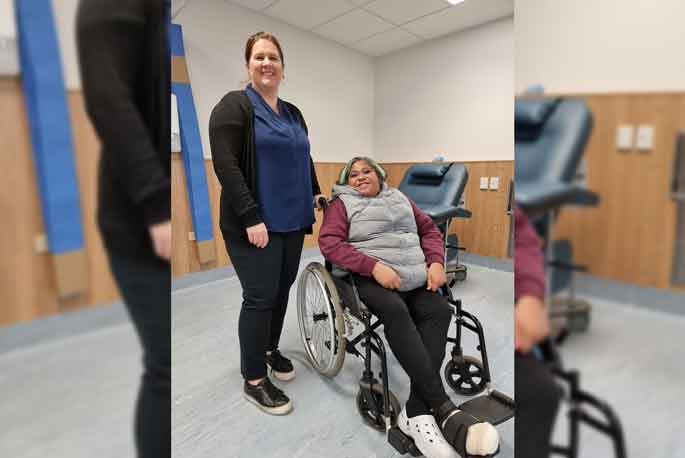More dialysis patients can now receive care closer to home with the opening of a 3 million Ōhane Dialysis Unit at Tauranga Hospital signalling a step forward in renal care for the Bay of Plenty.
The unit, which has doubled the number of dialysis chairs previously available, took about nine months to build before opening its doors to patients this month.
'We're doubling the number of dialysis chairs available, going from seven to 14. That means we can care for up to 56 patients a week when we're fully operational,” says Te Whatu Ora Hauora a Toi clinical nurse manager renal Katie Johanson.
'And it means we can dialyse more people closer to their home, so here's less travelling for them.
'Our goal is to make the new unit as accessible, welcoming and patient-centred as possible. It's a huge burden on a patient's life to go on dialysis three times a week and we want to make that as positive an experience as possible.”
The hospital also has a goal with the new building to help patients become more independent. 'There's more space, so we'll have more time with them, and they'll have their own kitchenette area, so they can make it more homely and more welcoming for their whānau.
'One of our patients, Bill Nepia, gifted us the name of the building, the Ōhane Dialysis Unit, which made it even more special.”
Geraldine ‘Geri' Stantiall, who has been on haemodialysis for seven years following type 2 diabetes complications which led to kidney failure, says the unit will be good for staff as well as patients.
'All the patients are really looking forward to moving in. It'll be nice for the nurses and doctors here as well. They are amazing, they always try to work things out for us, and we discuss our care with them. They're very compassionate people.”
Geri has three five-hour ‘shifts' each week. The Tauranga mother-of-two says one of the hardest parts of being on dialysis is when fellow patients pass away. 'You spend so long in here together that you form a bond. I love all the patients that come here and, sadly, we've lost three people in the last three weeks.”
Looking to the future, Geri says more needed to be done to prevent the need for dialysis units.
'Prevention is better than cure, so it's about stopping people getting to this point. If you educate people with pre-diabetes and diabetes you can avoid the need for dialysis. Type 2 diabetes is about diet control. Educating young people in the community about their diet is where it all needs to start.”

